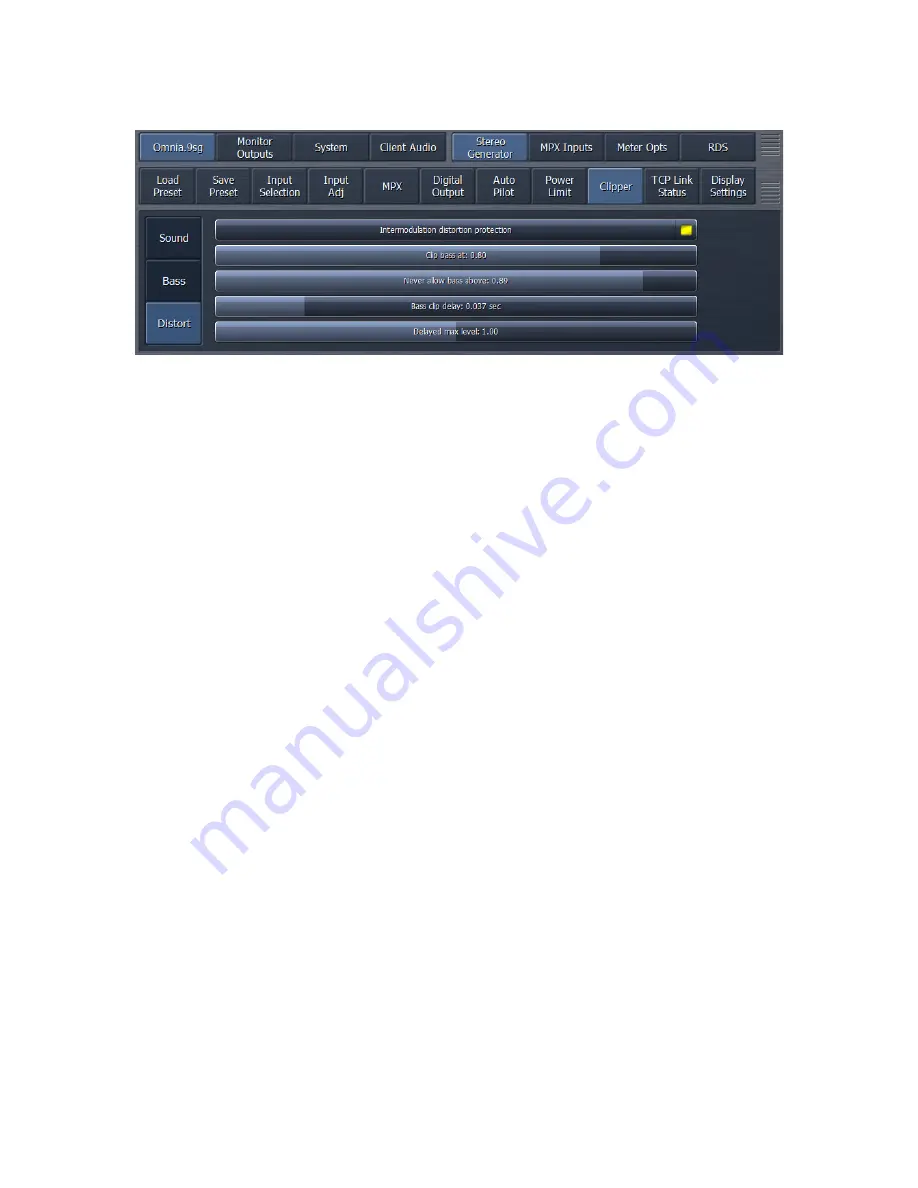
33
Distort Menu
This menu contains the controls primarily responsible for distortion management,
particularly intermod distortion, and for the behavior of the bass clipper.
•
Unless you specifically want the presence of intermodulation distortion (where
strong low frequency material can attenuate or audibly distort higher
frequencies) we strongly recommend the “Intermod Distortion Protection”
control be left enabled.
•
The “Clip bass at” control is analogous to the traditional “bass clipper threshold”
control found in other processors. The highest setting of “1” represents a 0dB
threshold and allows the main clipper to handle more bass material. Lower
values transfer more of the bass clipping to the dedicated bass clipper. Each
reduction of O.1 represents an additional 1 dB lowering of the threshold (0.9 = -
1.0dB, 0.8 = -2.0, 0.7 = -3.0, etc.).
•
The “Never allow bass above” control works in conjunction with the “Clip bass
at” control to create a window within which Omnia.9sg can dynamically vary the
actual bass clipper threshold to help prevent intermod distortion.
Specifically, it prevents the bass peak level after clipping from exceeding a
certain setting.
Values that are increasingly lower in relation to the setting of the “Clip bass at”
control will result in more protection against intermod distortion but at the risk
of less overall bass, while higher values result in more bass but at the risk of
audible intermod distortion. Setting the value of these controls too far apart can
cause unpredictable and unusual intermod affects, so adjust with caution while
listening to a wide range of bass-heavy material.
Note that if both controls are set to the same value, the bass clipper will operate
in the traditional manner with a fixed threshold as determined by the “Clip bass
at” control.






























